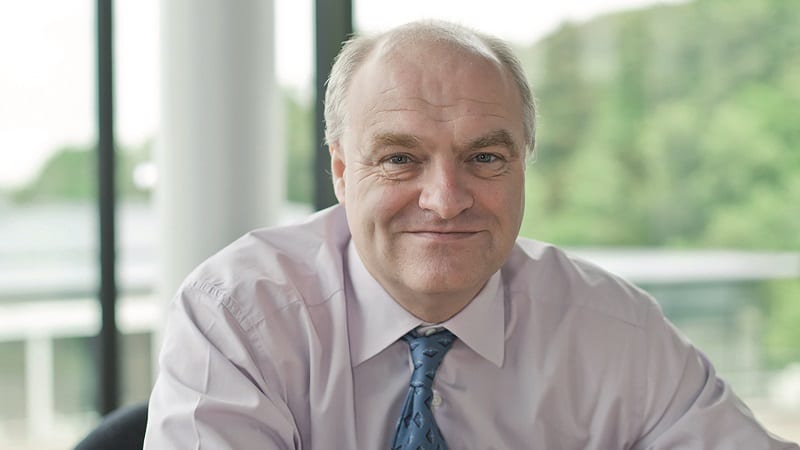This has been a storming decade for Baillie Gifford. Its growth style has been perfectly adapted to an era of loose monetary policy and all of its major funds are top quartile over the past one, three and five years.
But the architect and custodian of this process, James Anderson, is due to retire on 30 April 2022.
What problems can this type of transition bring for investment managers? And is this likely to happen at Baillie Gifford?
See also: Investors mull future of Scottish Mortgage without James Anderson
Ben Yearsley, co-founder at Fairview Investing, believes there are three main problems that can go wrong when the custodian of an investment process leaves: the new managers misinterpret the process, they pick the wrong stocks, or the style goes against them in the market.
Darius McDermott, managing director of Fund Calibre, adds in style drift as a potential risk. The final, more elusive, problem is that the manager has a skill and experience that simply can’t be passed on.
Long-term growth style is in Baillie Gifford’s DNA
For Baillie Gifford, problems around style drift or misinterpretation of the process seem vanishingly unlikely.
Yearsley says: “The process can undoubtedly keep going at Baillie Gifford. It is ingrained in its DNA. Everyone that joins the firm buys into that way of running money.”
Baillie Gifford’s staff turnover is negligible, at around 5% per year. Many analysts come straight from university and stay with Baillie Gifford for their whole career.
In a recent research note, Winterflood points out that other partners have left without any apparent impact on their funds.
“Most partners at Baillie Gifford seem happy to wander off into the sunset when they hit the age of 60 or so. Recent examples include Charles Plowden, manager of Monks Investment Trust until April this year, and Sarah Whitley, the former longstanding manager of Baillie Gifford Japan.
“Tom Slater, the fund’s co-manager since 2015, is an experienced investor and we rate him highly. We do not foresee any change to the investment approach or rationale as a result of the forthcoming change to its management.”
McDermott is equally relaxed: “The way Baillie Gifford behaves is all about succession planning: every trust has more than one manager. Style drift is theoretically possible, but Tom Slater has worked with James Anderson for years: he’s not going to become a value manager the moment his co-manager retires.”
Scottish Mortgage’s new deputy manager is still an unknown
Could a new manager start picking the wrong stocks? More than many others, Baillie Gifford’s process relies on ‘discovery’, finding new and exciting companies.
Yearsley says that while Tom Slater is unquestionably a capable replacement with a proven track record, Lawrence Burns, the new deputy manager, is more of an unknown. He believes the biggest question is whether he can keep the pipeline of ‘discovery’ that is such an important part of Baillie Gifford’s long-term global growth process.
However, Winterflood says: “In identifying these companies, (Baillie Gifford has) built a powerful network that increasingly relies on voices outside of the mainstream financial sector, including academics and specialists.”
This is likely to feed the pipeline of new ideas for some time to come. There is a risk around how a new manager uses that network, but Slater and Anderson have worked together for decades.
Few transitions of this scale apart from Woodford and Barnett at Invesco
There aren’t many precedents for firms of this size making this type of transition. Hugh Young remains at Aberdeen as the guardian of its process, focused on quality and value; other high profile managers such as Anthony Bolton or Alexander Darwall have been about one or two funds, rather than the ethos of a whole firm.
Perhaps the only example as significant as this one is the transition from Neil Woodford to Mark Barnett at Invesco.
The messy fall-out from Woodford’s departure disguises what had otherwise been a relatively successful transition. Barnett had worked with Woodford for 20 years, was well-prepared and a capable custodian of the ‘value’ style established by Woodford, but the market turned violently against this approach just as Barnett inherited the funds.
Yearsley says: “It is not like Mark Barnett did anything wrong. He was just unlucky that the market went against him.”
Value rotation may be Baillie Gifford’s biggest risk
Few would predict such a violent shift away from the growth style, particularly since the pandemic has accelerated a number of the key themes represented in the Baillie Gifford portfolio, such as e-commerce, biotech and digitisation.
However, this may yet be the biggest risk for Baillie Gifford: after more than a decade of astonishing performance for the growth style, there is bound to be some recalibration in the market as economic recovery builds.
McDermott points out that in the last value rally – approximately 1 January 2000 to 1 January 2010 – Scottish Mortgage was ahead of the investment trust Global Growth average, but only just.
He adds: “They do extremely well when the climate is right, but value will have its moment.”
Overall, Baillie Gifford does not appear to be vulnerable to many of the elements that could derail a transition from one generation to the next. There seems little chance of style drift, or problems with the integrity of the process. The one risk remains a change in market direction, and that would have happened whether Anderson was at the helm or not.
See also: Can Baillie Gifford endure a long-term value rally?











